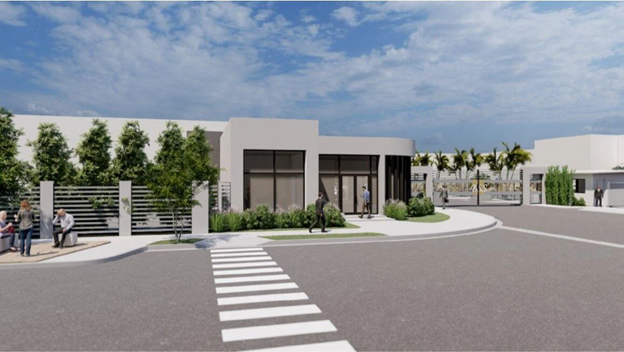
Biosimilar Action Plan Long Way to Go
The FDA released the biosimilar action plan July 2018 and held meetings in early September 2018 to obtain input from public. In the September meeting numerous speakers representing a multitude of view point spoke. During the meeting no cohesive or collated theme was found. Big pharma continue supporting their position on the need for biosimilar developers to conduct expensive and lengthy clinical trials and the need to look for “real life” experiences.
The FDA team that was represented had a tall order in trying to make sense of all the inputs obtain from so many stakeholders.The pressure multiplies with the current administration focused on accelerating biosimilar approval, in light of the significant savings realized in European health system.

EUROPEAN EXPERIENCE – “Real Life Experience”
The latest approvals in Europe of Peg-filgrastim, Adalimumab, Rituximab, Trastruzumab, Infliximab is predicted to save the health systems in European countries billions of dollars. In England alone, Adalimumab which is almost $500M market is expected to save $150M in the first year of launch. The FDA has still to leverage “Real Life Experience” from a highly regulated agency. According to EMA more than 700 million patient days on biosimilar treatments over the last 10 years have been documented with no major side effects differing from innovator drugs. To date the EU has approved more than 35 biosimilars and according to European Genetic Medicines agency it has save the EU more than $1.5B per year and with this number to increase significantly based on new approvals.
Forty Four Billion Dollars – Adoption of EU Model
The FDA and the current administration is looking at these data sets very closely and would like to accelerate these types of savings into the US Health System. If US were to adapt the same standards or recognize drugs approved in Europe. The Rand Corporation reported that the use of biosimilars is estimated to result in US health care system cost savings of $44.2 billion (range, $13–$66 billion) between 2014 and 2024 (~4% of total biologic spending), from reductions in direct spending on biologics.
PROGRESS ON BIOSIMILAR ACTION PLAN
The most updated insight on the internal progress of the biosimilar action plan (BAP) was provided by Leah Christl, PhD, associate director for therapeutic biologics, director of the therapeutic biologics and biosimilars staff in the office of new drugs in the FDA’s Center for Drug Evaluation and Research during DIA Biosimilar conference held on London October 22 to 23.
Leah Focused on the following areas and gave updates on the progress to date. She indicated that the BIOSIMILAR ACTION PLAN (BAP) allowed the agency to align and prioritize internal plans and resources. She gave an update on the following areas of BAP:
- Improving the efficiency of the biosimilar and interchangeable product
- Maximizing scientific and regulatory clarity for the biosimilar product
- Developing effective patient communications in understanding of biosimilars
- Supporting market competition by reducing gaming of FDA requirements
The following are the highlights of Leah’s update and our interpretation of the goals expected to be achieved with effort to date. This info is not intended to be comprehensive just a brief update on what we are observing……
Improving the efficiency of the biosimilar and interchangeable product development and approval process.
- New review templates being developed by agency
- Critical quality attribute being developed to help in product development
- New PD Bio markers being developed by agency resources. Significant progress on bio-markers for Filgrastim and Peg-Filgrastim and challenges remain other product like rheumatology products and B-cell depletion like Rituximab
Goal : Reduce or eliminate large and expensive clinical trials
Maximizing scientific and regulatory clarity for the biosimilar product development community.
- Carving out or carve-in indications to support early product launch and reduce patent barriers
- Enhancing the Purple Book to support potential developers and increase patent clarity
- Utilization on non-Us licensed reference products to reduce innovator companies from gaming the system
- Data Sharing to increase overall understanding of the innovator products
Developing effective communications to improve understanding of biosimilars among patients, providers, and payers.
- Patient education and social media driven videos to increase exposure
- Outreach into schools for providers to improve product understanding
- Enhancement of knowledge for providers with FDA pushing data and information to reduce the confusion created by the various marketing messages being generated by innovator companies.
Goal : Education of providers to enhance biosimilar uptake
Supporting market competition by reducing gaming of FDA requirements or other attempts to unfairly delay market competition to follow-on products.
- Review of practices with Federal trade commission
- Elimination of loop holes in the current law
- Curbing practices by innovator companies to sell samples for biosimilar testing
Goal :Increase speed by eliminating practices from Innovator companies to slow down product development.
A notable item not mentioned during the talk was the update on the statistical consideration for demonstration of analytical similarity. The current standard and number of lots required are cost prohibitive and in some cases can’t obtained in the market. This is a significant barrier in removal of “residual uncertainty”
The Biosimilar Action Plan has given the FDA an increased level of focus and they are making some progress.
FDA needs to continue to provide clarity on key tactical issues like analytical similarity, the creation of critical quality attribute library and leveraging the “real life” experience from Europe and developing countries like India, Korea, China, and Latin America.
Long way to go in the US before we reach EU level of acceptance. We stay optimistic on the work being done on biosimilar plan. We are hopeful that the agency speeds up their draft guidance to increase clarity in time the next wave of biosimilar development
As always please connect with at Robert.Salcedo@biosciencescorp.com . We welcome your opinion and advise.



